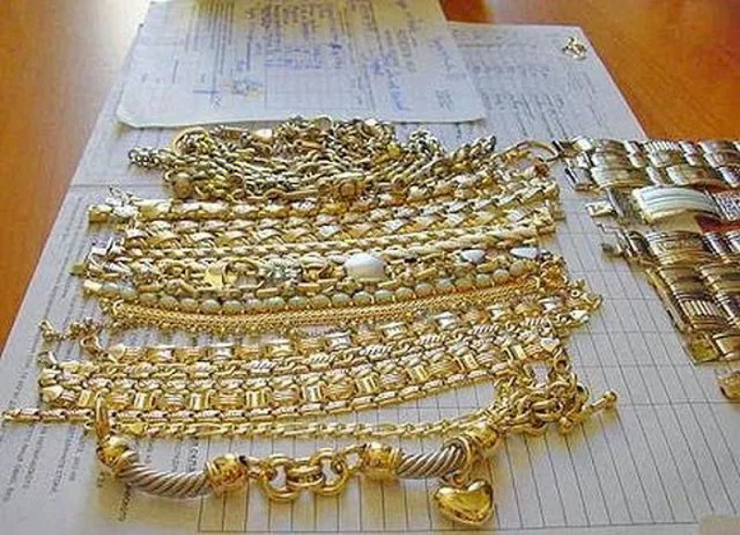
7. 7. 2005 Fifteen thousand gold objects
Categories: Treasures , Calendar , Nálezy nejenom s detektorem kovů ve východní Evropě

Eleven years ago, Bulgarian archaeologists discovered an unprecedented golden treasure near the village of Dabene. It is located about 120 kilometres from Sofia. The depot contained fifteen thousand small and exquisitely crafted gold objects.
According to the archaeologists, it is older than the well-known Schliemann treasure, which disappeared during World War II and was later found in Russia. The newly found depot in Daben also contains more gold ornaments. The gold was found in the tomb of a man who died 42 centuries ago.
"He was cremated and a mound of earth was piled on top of his ashes and wealth, suggesting he was a member of the social elite," said academic adviser Vasil Nikolov, who is overseeing the excavation.
But archaeologists do not know the ruler's name. Nikolov said it was long forgotten. He was one of what they call the Protothracians. They came from a mixture of Indo-Europeans and indigenous peoples during the second millennium BC. Proto-Thracian culture evolved into Dacian and Thracian culture.
The Thracians were very numerous, indeed they were the second most numerous nation in the world. They were wealthy traders and skilled craftsmen. They had contacts with all the great civilizations of their time - Persians, Scythians, Greeks, Celts, Romans and even Egyptians. The capital, now called by archaeologists after the ruler Sevt III. Sevtopolis.
As for the treasure itself, what fascinates archaeologists more than the abundance of precious metal is the exquisite goldsmithing of people 4,200 years ago. There are as many as 15,000 ancient tombs in Bulgaria. In these, beautiful artifacts made of gold have been found.
Archaeologists have discovered the world's oldest treasure in Bulgaria. These were gold objects, excavated 35 years ago near the Black Sea city of Varna, which are more than six thousand years old...
"These are gold artifacts discovered in Troy. The high number of gold objects and their high level of craftsmanship lead us to question Troy as the largest"Bozidar Dimitrov, director of the Sofia History Museum, said.
Sources: www.idnes.cz, www.irishexaminer.com, http://archaeologyinbulgaria.com/
The article is included in categories:
- Archive of articles > Treasures
- Archive of articles > Calendar
- Archive of articles > Archaeology > Finds and rescue research abroad > Nálezy nejenom s detektorem kovů ve východní Evropě
Post
Co je to za nesmysl na té fotce? Vždyt to jsou novodobé zlaté šmuky,nebo snad blbě vidím...? 
cernunos: Děkuju moc za upozornění. Poslala jsem ilustrační fotku, co byla u jednoho z článků  Tady jsou k nahlédnutí ty správné https://www.idnes.cz/zpravy/archiv/bulharsky-poklad-souperi-se-zlatem-troje.A050819_083641_zajimavosti_lja/foto/LJAd1a83_zlato2.JPG
Tady jsou k nahlédnutí ty správné https://www.idnes.cz/zpravy/archiv/bulharsky-poklad-souperi-se-zlatem-troje.A050819_083641_zajimavosti_lja/foto/LJAd1a83_zlato2.JPG
No, ten překlad je evidentně z překladače, doporučuji si to pak ještě alespoň přečíst a upravit. Ty chyby hrozně bijí do očí.








